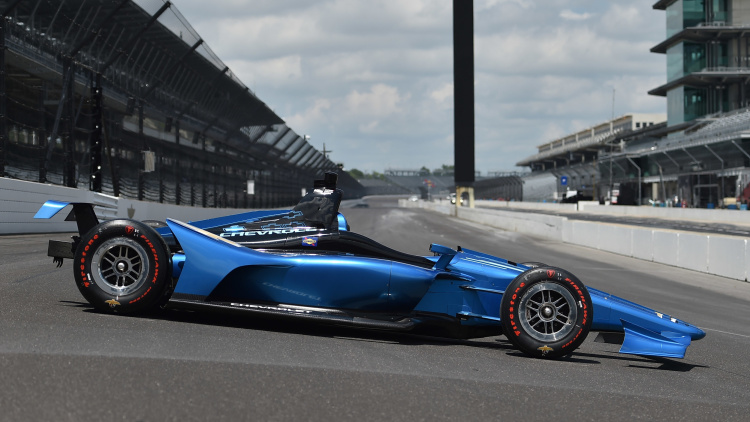Big changes are afoot for the 2022 season of IndyCar. The racing series announced Thursday that it will say goodbye to the era of solely internal-combustion engines to power its race cars, and hello to hybrid powertrains.
That's not bad news in the slightest. The change to a hybrid powertrain will help IndyCar race cars make at least 900 horsepower. Organizers believe the faster cars will help create more intense action on the track and increase overtaking engagements to make for more entertaining racing. The current cars make between 550 and 700 horsepower, according to the series' website. The future powertrain's basic elements will consist of a multi-phase motor, an inverter, and electric storage device to enable regenerative braking.

2018 IndyCar body Honda
The switch to hybrid power will allow drivers to restart their cars from the cockpit. The cars are currently started from outside the cockpit via a hand-held electric starter. IndyCar said this change will better protect the driver and the AMR Safety Team because cars won't need to be restarted on track during caution flags. It should also cut down on the number of caution flags and improve race pace.
IndyCar said the extra power from the hybrid system will make the push-to-pass engagements, which are only allowed on road courses, even more thrilling. The feature will unlock more horsepower with the new powertrains when the driver initiates the system from the cockpit. Drivers are allowed 200 seconds of push-to-pass capability.

2018 IndyCar body Chevrolet
Both OEMs involved in IndyCar today, Chevrolet and Honda, agreed to the new technology will ensure the series remains relevant and provide an area for the brands to test new technology.
The automakers also agreed to delay the new powertrains to 2022 to coincide with a new chassis. Originally, new internal-combustion engines were set to roll out in 2021. The powertrains will be used for five years through 2027. The series also said the move to 2022 allows more time for a third OEM to join Chevrolet and Honda. We'd certainly love to see another company mix it up in IndyCar racing.
